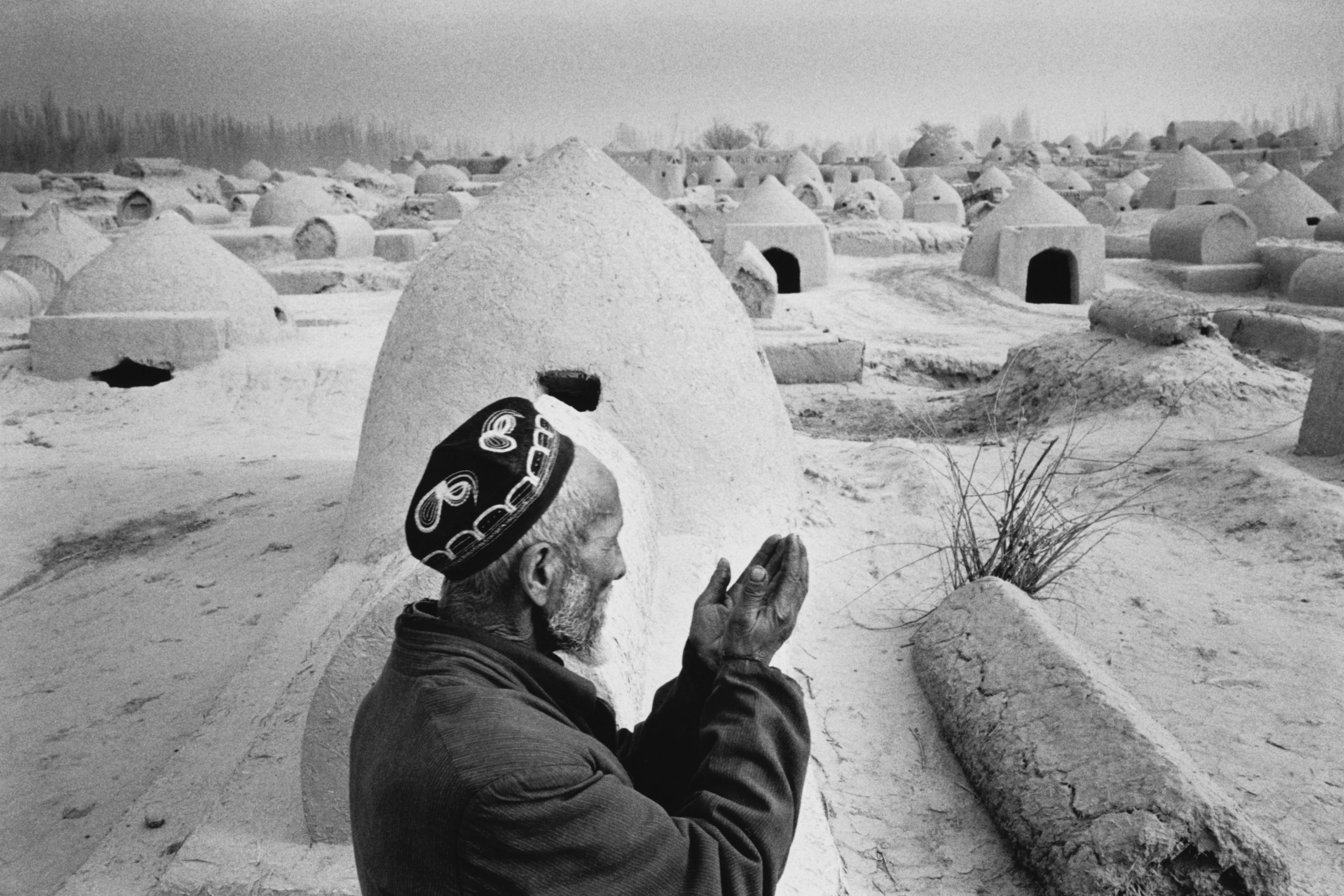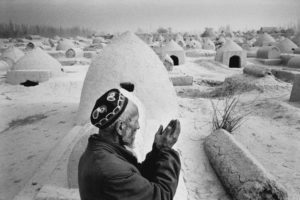How the Chinese government destroyed Kashgar, fulcrum of the Silk Road

Reaction, 5 October 2018
 By Rose Cecil – A few months ago the Bangkok to Tbilisi Motorcycle Rally rode into Kashgar, Xinjiang, north-westernmost province of China and ancient fulcrum of the Silk Road.
By Rose Cecil – A few months ago the Bangkok to Tbilisi Motorcycle Rally rode into Kashgar, Xinjiang, north-westernmost province of China and ancient fulcrum of the Silk Road.
In June this year the Rally team walked round the brand-new “Óld Kashgar”, a travesty of its former charm and history. No-one spoke to us this time; whereas previously people gathered round the motorbikes to ask a myriad questions.
That was how I remembered Kashgar from my times there in 1989 and 1990. I remembered the dusty streets, the sand fine between your toes, and the mud houses and the murmur of voices as you walked home through the velvet night, a glow of golden light through a doorway, the brass door bindings shining in the lamplight. Above, the call of the muezzin and the clop of donkeys and creak of wood and harness as the carts trotted through the old city.
Today there is nothing of that left. The Chinese bulldozed the city, the old bazaar and its ancient walls. It is now a twenty-first century dystopia with broad streets lined with concrete and neon, buzzing with scooters and cars. There are surveillance cameras everywhere monitoring all movements and employing facial recognition technology to map everyone´s movements. Mobile phones are monitored – ours were compulsorily checked on leaving China. Every public building has alligator teeth barriers and airport-style security. Every corner and intersection is manned by police. Police cars with red and blue lights flashing scream past and flying roadblocks are set up randomly to do spot checks. No-one looked us in the eye.
From the first day in Xinjiang I felt that we had arrived in an Orwellian nightmare – a place where Big Brother and the totalitarian state of “1984” had been assiduously re-created by Chen Quanguo, Xinjiang Party Secretary, appointed to implement the “Copper Ramparts, Iron walls” policy he created in Tibet. This was described by Human Rights Watch in 2017 as an “impenetrable public security defence network, consisting of citizen patrols, border security posts, police check posts, surveillance systems, internet controls, identity card monitoring, travel restrictions, management of ´focus personnel’, grid unit offices, informant networks and other mechanisms that aim to control or monitor movement of people and ideas…”
The Chinese have recreated their own concrete Disney version of Old Kashgar in a small section, shorn of character and peopled with show Uighurs. The Uighurs, a Muslim Turkic people, are now a minority in their own land. It is estimated that they number under half of the province´s population, overwhelmed by subsidised Han settlers.
We discovered that the slightest infraction of the rules landed Uighurs in trouble. Too many visits to the mosque? Visitors are checked and logged at the entrance to the Id Kah mosque. Too many conversations about Uighur culture with your neighbours? Disappearances are common. Nobody knows how many Uighurs have been sent for “re-education”. Estimates vary wildly. The UN Committee on the Elimination of Racial Discrimation declared that “upwards of a million Uighurs” may be detained in camps. Orwell wrote in “1984”; “More commonly people who had incurred the displeasure of the Party simply disappeared and were never heard of again.” To justify this oppression the Chinese make use of scapegoating, blaming Uighur separatists and terrorists.
“You had to live – did live, from habit that became instinct – in the assumption that every sound you made was overheard, and, except in darkness, every moment scrutinised.” wrote Orwell.
Free once more in Kyrgyzstan we walked out of our door and looked back at the snowy Pamirs stretching away to Xinjiang, the living embodiment of the Orwellian dystopia of 1984, where, “if you want a picture of the future, imagine a boot stamping on a human face – forever.”
How the Chinese government destroyed Kashgar, fulcrum of the Silk Road

